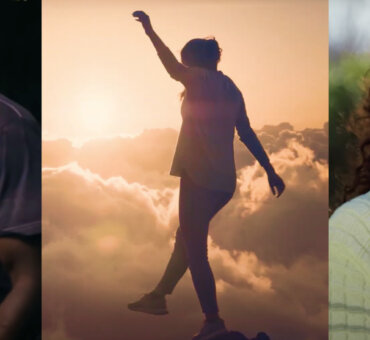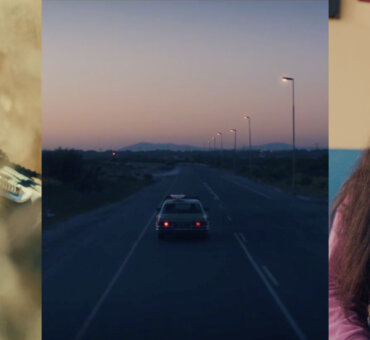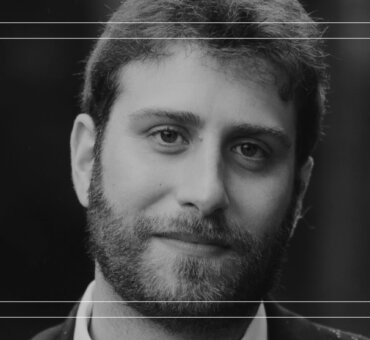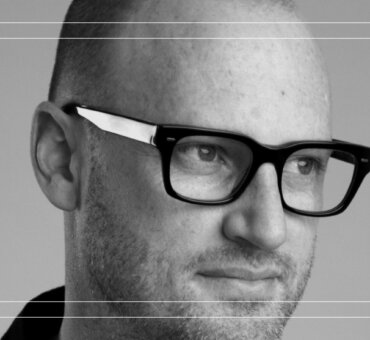Ultimately, any great creative is a servant to the idea. Egos disappear, collaboration happens, and the work becomes the main focus. But, this mindset also creates some obstacles, too—particularly when it means you have to produce 1,000 songs for Coca-Cola, at any cost. There are only a few people in the world who’ve faced this very specific problem and Noel Cottrell is one of them.
“We pulled together the most unlikely people to write these songs. We had account people, we had planners, we had tech people, and just about everyone in the agency writing songs,” Noel told us. “You’d find a quiet guy who was writing these great rap beats, and we’d say, ‘Where the hell did he come from?’”
As the Chief Creative Officer for Fitzo at the time (Noel’s currently the CCO at VMLY&R Kansas City), he found himself in the perfect creative storm—Between two ambitious ad men, one huge client, and potential massive failure. What he learned, however, was what it takes to make a Cannes Lion-winning campaign: Guts.
We talked with Noel about how he made his way into advertising, why every brief is an opportunity, and how he convinced Coca-Cola to take on a huge project by leveraging the names Tara, Kate, and Brynn.
Filmsupply: We read that you had a unique start to advertising.
Noel Cottrell: My backstory is kind of interesting. Being South African, I came over to the U.S. on a basketball scholarship and then ended up playing in London for a while. I had an English and psychology degree, double major. Just out of pure coincidence, while I was working about 10 different jobs, I ended up meeting my girlfriend at the time. And she was an au pair for one of the top people at Saatchi & Saatchi.
I landed a job there as an intern, following important people around, and fell in love with it. I cobbled together a portfolio and when I went back to South Africa, I tried to sell myself as an ad man [laughs]. I did a copy test to try and get into Ogilvy but got into another small shop and just kind of wormed my way up from there.
What made you fall in love with advertising?
I’ll never forget. When I was interning at Saatchi & Saatchi, the guys they had me follow around were working on Penn tennis balls at the time. I remember they all got dressed up like The Royal Tenenbaums and were playing tennis in the office, just against a green wall with a white piece of tape. At lunchtime, they all got in their fancy cars and went out to expensive lunches. I remember thinking, This is definitely something I could do.
How did you know you’d be any good at it?
I knew I had something when I was writing for my English degree and my psychology degree. Both of my final papers came back, and both professors said, “This is, by far, the most creative final paper that I’ve ever read.” With my psychology paper, I wrote about the power of horror to excite. It was all about horror movies and what they meant, and all the weird Freudian stuff.
For my English paper, I broke down wrestling commentary [laughs], specifically American wrestling commentary. I took a three-minute piece of wrestling audio and broke down all the weird English things that were in there. I knew I had that kind of bent. I thought my weird storytelling skill might be something that could be monetized.
Speaking of crazy projects, let’s jump ahead to the Coke project.
Oh yes, the Coke account. One of the things I always tell junior creatives is, “There are no bad briefs. Every brief that comes in the door is an opportunity.” Hiring helps, too. I’d hired a guy named Sherman Winfield from New York and he was working on a pretty boring account at the time. I told him, “Look, when new briefs come in, you can jump off that account.”
So he’d just got a new partner, James Beikmohamadi, and a new brief for a single radio spot came in from Coke. The idea was to relaunch the Coke names on cans, which they call Share a Coke, to simply say that now there were 1,000 names on Coke cans. So, if you couldn’t find your name in the past, if you had an ethnic name or your spelling was unique, there was a good chance you could find it now. That was the brief. But, they came back to me and presented the idea of doing one thousand songs, a song for every name. And I remember saying, “Guys, it’s a radio brief. The client has like $5,000 for the whole thing.” I thought they were joking.
But, luckily, I had some great Coke clients (and a really great Client Engagement Lead, Courtney Saul). Their first response was, “Look, we don’t have the money to do a thousand songs. We also don’t have any inclination—we don’t need media for a thousand different radio spots.” But, we kept at it. One day, we decided to record three songs for our account executives at Coke—Tara, Kate, and Brynn. We sent the songs to them and it was so delightful. They wanted to share it with their friends and family and put it on social. That was how we got them bought into it.
With 1,000 songs to produce, that seems like the easy part.
For sure. I went to a music house that I’d worked with a lot and they said they could do 200 songs. I went back to the guys and asked, “Would 200 songs work?” But, to James and Sherman’s credit, they said, “No, it needs to be all thousand songs.” I was like, “Shit.”
Our Producer David Berngartt found two guys who had just started a music house called Score a Score. They said they could pull it off, but they needed our agency to write the songs. When you think about writing a thousand songs, it sounds pretty daunting. Each one needs to be 30 seconds long and needs to be rhyme and clever, in a different genre, so they’re not all country or whatever.
We pulled together the most unlikely people to write these songs. We had account people, we had planners, we had tech people, and just about everyone in the agency writing songs. You’d find a quiet guy who was writing these great rap beats, and we’d say, “Where the hell did he come from?”
Obviously, we couldn’t have a client meeting for every song, so we decided to make it fun. We’d take the client to lunch, put headphones on her, and then she’d listen to the songs. Sometimes, she’d say, “Stop. You can’t say that.” [laughs] And then we’d have to rerecord the song. It took us a long time, but we got all of them done.
How pivotal was this project for you?
It was a big turning point for the agency because, first of all, it really brought us together because everyone was writing. The other thing was, the amount of publicity and fame it got in the moment, changed the perception of the agency with Coca-Cola. Even for me, I’d done really famous work at Grey New York. But, this was the first time since I left, where I had a campaign that was as big. Now I was a chief creative officer, and it made a big difference to feel like, “Phew, all right, I have another campaign that hit for me.” I was super proud of it.
Did it change your perspective on the creative process?
There were so many obstacles, and that’s what made me proudest when it was done. It really reminded me that creativity is everyone’s business. I know us creative people often bristle at that, but it was real proof that creative juices can come from anywhere. I’m not looking for that on every brief, but, it was a surprise to see everyone from around the agency being able to write. The credit list on that account was a piece of work.
It seems like it took a lot of trust to stick with the idea.
Yeah. In this case, it was the creative team who’d come up with the idea, Sherman and James. We had a producer who would come in when he was really feeling the pressure. He’d say, “Hey, we’ve got to 800.” Then, I’d pop my head into Sherman and James’ office and say, “Guys, I think 800 is as much as we’re going to get.” And they’d say, “Nope.”
I only knew how important one thousand songs were after it took off because there was a name for every song. But, as a creative leader, you have to listen to your people. They were right about that. Obviously, I wanted a thousand songs, but as a business leader, you’re getting equal pressure. You have to listen to your people and trust their instinct. And their instinct was right.
There’s a lesson for younger creatives, too—don’t be afraid to push back.
With work that ends up being famous, you almost always look at it and say, “How did they do that?!” I was at Fitzco, which is part of McCann, when they did Fearless Girl. Just how hard they pushed to get permitting and casting a bronze statue is insane. It’s just so audacious.
But meaningful work is always audacious when you look back at it. As a young creative person, don’t censor yourself. Don’t look at the brief and say, “I’ve got $5,000 to do one radio ad. All right, let’s come up with one radio ad.” Come up with, on every brief, the most audacious, amazing thing that you think will stick in culture—the one thing you think will really take off.Just like Noel, Margaret Johnson, CCO at Goodby Silverstein & Partners has had several career defining moments, including the launch of her recent project: Lessons in Herstory. Read our interview with her here.






